In all probability, the majority of seasoned tropical marine aquarium hobbyists that have considered experimenting with temperate marine aquaria were enticed not merely by the prospect of keeping new species, but by the opportunity to accept new challenges. Most of those who have tried their hands at maintaining temperate systems would likely attest that they are indeed the work of a singular art and a singular science. Inasmuch as marine habitats of the mid-latitudes are largely analogous to those of the tropics, they differ with respect to key parameters simply by degree (Dakin 2003); these differences can be dramatic, however, and consequently have a considerable impact upon the design, fabrication, and operation of the aquarium system. A timely recognition of the peculiarities of the temperate marine environment– and so the temperate marine aquarium– will help to ensure the aquarist’s success while conserving a potentially substantial amount of time, sweat, and money.
Tanks
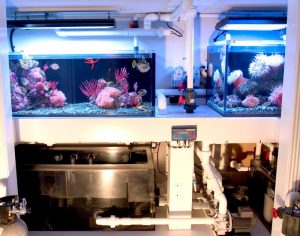 Of course, the selection of an appropriate tank is a principle concern. It is advisable to implement the largest tank one can effectively manage. Working with greater water volume, the aquarist is much better equipped to cope with the rapid fouling associated with the heavy feeding required by many temperate invertebrates.
Of course, the selection of an appropriate tank is a principle concern. It is advisable to implement the largest tank one can effectively manage. Working with greater water volume, the aquarist is much better equipped to cope with the rapid fouling associated with the heavy feeding required by many temperate invertebrates.
As regards tank material, acrylic is increasingly gaining favor over glass. Not only is it lighter and more amenable to modification, it is much less likely to shatter from the impact of falling rockwork– a considerable advantage where the heavy round stones common to temperate shores are used in quantity.
Acrylic is superior to glass as a thermal insulator. This property is important not only in efforts to control water temperature, but to minimize sweating. Sweating is a phenomenon whereby large gradients between the system water and ambient room temperature conspire with elevated room humidity to produce droplets of condensed water on aquarium panels. While sweating rarely occurs in reasonably dry, air-conditioned environments, the risk can be altogether eliminated by the use of 1/2″ (or thicker) acrylic panels. Double-paneled glass tanks (often filled with various gasses) may still be manufactured for this purpose, though it’s difficult to imagine why even the most scratch-afeared hobbyist would prefer one of these antiquated hulks. Nevertheless, impressive DIY projects utilizing double-panel glass (perhaps along with fiberglass or resin-coated plywood) are certainly possible for those with the right tools and skills (Wrobel 1991, Bjørndal 2008).
Pumps, Plumbing, and Wavemaking Devices
Water flow patterns and velocities have a strong influence on the distribution of species in estuarine and rocky intertidal habitats; in many cases, localized variations in flow characteristics allow for high levels of species richness. Careful attention to water movement can make the difference between an adequate and a truly admirable temperate aquarium display.
Whether one is attempting to replicate the steady, sweeping drag of an estuarine or subtidal habitat, or the violent surf of a rocky intertidal habitat, proper water movement is essential (Wingerter 2008). These systems will frequently require a 5-10x hourly turnover rate– others will perform best at a brisk 15x rate.
While most PVC piping and fittings are certainly strong enough to hold up to the cooled water, the plumbing will be markedly more rigid– and possibly more susceptible to damage from physical stress (particularly around ball joints, threaded unions, etc.). Furthermore, skimpier plumbing is more susceptible to sweating. It is accordingly well worth the higher cost to opt for schedule 80 PVC plumbing (Weast 2004). New plumbing ought to be thoroughly rinsed to remove any harmful residues (Anderson 2001).
To simplify plumbing, reduce clutter, and (above all) reduce heat input, installation of a single, powerful, external pump is by and large preferable to a battery of small internal pumps. Quality external pumps are self-cooled (to some extent) by built-in fans. Pressure ratings should be taken into consideration where water is to be diverted to dump buckets, lifted from remote (i.e. basement) sumps, etc. Small internal propeller pumps can be used for supplemental flow, however, and the recent development of magnetically coupled units– with motors that operate outside of the tank– are showing great promise for temperate aquarium applications on account of their versatility and low heat output.
Air pumps are a simple and inexpensive means of providing supplemental water movement. They are particularly useful for temperate aquaria in that they produce no heat; moreover, the modest spray at the surface can enhance evaporative cooling. Air driven circulation can be quickly and conveniently used on occasion (e.g. as back-up aeration during emergency pump or plumbing repair).
The use of certain devices to duplicate wave action will contribute to the health of the many sessile temperate invertebrates, as well as enhance the aesthetic and naturalistic appearance of the aquarium. Switching-current water valves are quite suitable for this (and usually preferable to electronic wave pump controllers) in that they are small, inexpensive, unobtrusive, and do not generate heat. This T-shaped apparatus alternately switches water flow from the pump between two outlet ports. The switching frequency increases with increasing water flow. Where flow rates exceed those desired by the aquarist or recommended by the manufacturer, pressure to the switching device may be reduced and fine-tuned by way of a ball valve on a leading bleed line.
More aggressive water movement and aeration can be achieved with a dump bucket or surge tanks (Hemdal 2006). Both mechanisms are driven by gravity; in either case, water is steadily pumped to a reservoir situated above the main tank, whence it is intermittently discharged forcefully back to the main tank. The result is a pattern of modest currents periodically punctuated by vigorous surges, very effectively resembling the drama of intertidal surf.
Chillers, Fans, and Insulation
Mid-latitude water temperatures are usually within 45-65°F. Temperate flora and fauna are not equipped to tolerate warm temperatures ad infinitum (Wrobel 1991, Anderson 2001, Dakin 2003). Simply placing the aquarium in a basement or constructing a DIY unit from a length of garden hose and an old mini-fridge will rarely provide sufficient cooling for these organisms (Hemdal 2006); temperate aquarium livestock require an appropriately sized, quality aquarium refrigeration unit. Considering the tendency of manufacturers to rate their units’ capacities under optimal conditions, one should err on the side of caution when determining an appropriate size of chiller (Driscoll 2006). Over-sizing will afford the aquarist with some opportunity to compromise system cooling efficiency (e.g. selection of internal sump pump) for the sake of aesthetic or practical considerations.
Modern aquarium refrigeration units frequently encase the heat exchanger, compressor, thermostat, and control panel in compact housing; some such “flow-through” systems even include modular components such as UV sterilizers. “Drop-in” systems are still widely available for those who, for whatever reason, cannot or do not want to plumb the unit into their system; installation is as simple as dropping an attached titanium cooling coil directly into the sump.
In short, pressurized refrigeration units transfer thermal energy from aquarium water to a refrigerator coolant through its heat exchanger coils. Having passed through an expansion valve upon entry to the heat exchanger, the coolant is vaporized. Heat is absorbed through the exchanger by the vaporization of the coolant. A compressor pressurizes the coolant, whereat it moves into a condenser and is liquified. Condensation of the coolant releases heat through the exchanger to the surrounding air, which is subsequently fanned off (Wrobel 1991).
Chillers require plenty of ventilation to function efficiently. The inlet and outlet vents should be completely open. Additional fans can be positioned to blow heated air away from the chiller (as well as lighting fixtures, pumps, etc.) towards a doorway or open area. Concealing a unit under an aquarium stand will render it useless, as it merely throws the heat right back into the system. Hobbyists that are concerned about the impact that a bulky, droning 1/2 HP chiller might have on the ambience of their home or office should consider installing it in a remote area (e.g. the laundry room) or constructing a nice-looking sound dampening box. Installation of a portable air-conditioning unit should be seriously considered if the refrigeration unit is to be operated alongside the rest of the aquarium system in a confined area (e.g. a small bedroom).
Moisture resistant foamed plastic home sealing insulation panels can easily be cut to size and secured to the back and sides of the tank (perhaps with duct tape); a front panel can be loosely secured in some manner (perhaps with Velcro strips) and easily removed for viewing. Bubble wrap or wool-type materials (e.g. fiber glass or cellulose) can be secured to pipes and tubing with duct tape for additional insulation.
Filters and Water Treatment Devices
Mid-latitude coastal waters are among the most productive environments on the planet. Despite shorter growing seasons and shallower euphotic zones, primary production along temperate shores typically exceeds that in the tropics due to a relative richness of nutrients (Wingerter 2009). These fertile waters support massive spring blooms of phytoplankton; the abundance of phytoplankton supports summer zooplankton blooms; late-season accumulations of plankton excretion, mucus, and carcasses– along with associated bacteria– provide sustenance to everything from small fishes to filter-feeding detritivores as particles of marine snow.
The same reef aquarium hobbyists who suffer the perpetual self-reproach of overfeeding can freely indulge with a temperate system. A very large majority of temperate cnidarians are azooxanthellate, and will therefore need to be fed regularly. Many planktivores, such as sponges, bivalves, and barnacles, will not only require large amounts of food, but will be quite selective of their fare. Consequently, the aquarist must 1) maintain populations of plankton within the aquarium system by simulating the conditions under which blooms naturally occur, 2) regularly replenish the aquarium system with plankton from isolated cultures, or 3) commit to a well-planned feeding regime that may include a considerable quantity and variety of commercially prepared planktonic foodstuffs. The first approach is taken only by those aquarists that can stomach the greening of their aquarium water; those who can only view green water as dirty water should take one of the latter two approaches, or abandon the option of keeping planktivorous creatures altogether (Wrobel 1991). At any rate, problems concerning food and feeding in a temperate aquarium (as with any type of aquarium) should be addressed long before the filter system is stoked and livestock is introduced.
Effective filtration will reduce the need for extensive water treatment and water changes. Effective mechanical filtration will reduce the need for chemical filtration. Most mechanical filtration can be achieved with the sponge and poly floss materials familiar to any aquarist. In heavily fed systems, these materials will quickly intercept large quantities of POM. Allowing this waste to decompose in a prefilter is self-defeating; prefilters need to be rinsed or replaced as often as is feasible. Diatomaceous earth filters may be used as a final touch, removing particles as small as a couple micrometers.
Most chemical filtration can be achieved with granulated carbon or with a multitude of available resins. These materials scavenge DOM and other pollutants by attracting and binding certain molecular constituents within their matrices. Their use requires some forethought and caution, as many of these materials can remove beneficial compounds (Hemdal 2006). There are no special applications for chemical filtrants in temperate aquaria; the heavy nutrient loads common in these systems do, however, makes them look especially serviceable.
Foam fractionation (i.e. protein skimming) can be used in temperate aquaria to great effect, where it serves not only to aid in the removal of DOM but to help meet the high oxygen demand of many temperate creatures. Lower temperatures do not appear to affect fractionation; protein skimmers may be operated in temperate aquaria as they would in other systems (Wrobel 1991).
Effective water treatment can play a major role in the successful operation of the temperate aquarium. Treatments will vary, of course, with the varying needs of each system. Some form of biological filtration (or, to use a more appropriate term, ammonia mineralization) will almost certainly need to be applied. While an extensive description of each application and each type of biological medium is beyond the scope of this discussion, it should be emphasized that the high nutrient loads, high oxygen demands and laggard microbial metabolism associated with these systems requires capacities that are seldom reached with a so-called undergravel filter; wet/dry applications with quality (non-clogging, high-surface area) media are a sound investment (Anderson 2001). The large amount of nitrate that will be produced can be remedied in a number of ways, ranging from deep sand beds to foam blocks to sugar- or alcohol-fed denitrifying chambers (Wrobel 1991).
The sensible use of an ozone generator can destroy harmful pathogens, rend DOM into more innocuous compounds, and enhance foam fractionation. Those who demand clear water and wish to maintain temperate flora would benefit greatly from ozone, which not only controls phytoplankton blooms (promoted by the strong lighting), but breaks down yellowing compounds (secreted by many kelps). One should initiate the use of this powerful oxidizer at the modest delivery rate of 0.1 mg/gal/hr, increasing the rate to treat heavier organic loads in increments up to about 1.0 mg/gal/hr. It is always safer and simpler to regulate ozone levels with a redox monitor/control unit; redox potential is best maintained between 350 and 400 mv (Wrobel 1991, Moe 1992).
Though the threat of water-born pathogens appears to be far less serious to temperate marine fish than to their tropical counterparts (Weast 2004, Wrobel 1991), UV sterilizers may be put into use for an added measure of protection. Aside from massive water changes, UV sterilization is the best (albeit last) resort in efforts to eradicate nuisance algal and bacterial blooms (Anderson 2001, Hemdal 2006).
Lighting
A great share of unexplored possibilities for marine aquarium keeping arguably lies in the field of marine horticulture. Probably the most rich and diverse sources of marine flora are to found along the world’s cool shorelines. Having adapted to the frequently turbid waters and fickle sunshine of the mid-latitudes, primary producers effectually manage their light budgets (Wingerter 2008); moderate light intensity (20-40 uE at 10-12 hrs/day) is generally sufficient for their survival (Wrobel 1991).
Properly illuminating a temperate marine aquarium is not altogether difficult. The temperate aquarist can easily achieve success with commonplace lights and lighting regimes. Most florescent and LED lamps will produce satisfactory results, and are preferable to incandescent and metal halide lamps by reason of their lower heat output. If the regular occurrence of algal blooms is not desired– and neither plants nor zooxanthellate cnidarians (e.g. Anthopleura spp.) are kept– artificial lighting is unnecessary for anything aside from viewing (Weast 2004). Still, if one is so inclined, he or she may devote more attention to illumination here than in any other area of aquarium keeping; the many (and oftentimes ecologically important) seasonal and depth-dependent gradients of light quality and quantity are increasing becoming replicable with the emergence of specialty bulbs and advanced microprocessor timing devices (Wingerter 2009).
Tools and Gear
Some temperate aquarists derive a certain masochistic satisfaction from plunging their hands into the frigid depths of their tanks; certainly, others do not. One can be spared the agony of prolonged exposure to well-chilled aquarium waters (if not lower the risk of heavy metal contamination, to which temperate invertebrates are allegedly hypersensitive) by keeping a few inexpensive items at hand. Nonmetal aquarium tongs are handy for minor aquascaping, removing waste, point feeding large anemones, etc. Magnetic algae scrubbers might earn more appreciation than ever before (though they cannot be used on double-paned tanks). Long, nontoxic aquarium gloves can be worn to maintain an acceptable level of comfort whenever an arm (or two) must be immersed in the tank.
Calculating the specific gravity of temperate aquarium water with a common aquarium hydrometer is unnecessarily difficult. The reason for this is that hydrometers measure water density, which changes with changing temperature. Thus, if one is to use such a hydrometer, either the sample water must be heated or the reading must be adjusted with a conversion table. While there are beer brewing hydrometers that would be appropriate for testing a warm-temperate system (60°F), a much better analytical instrument– a refractometer– can be had for only a slightly larger investment. Like hydrometers, refractometers measure specific gravity; however, they can be manually calibrated to room temperature and require only a few drops of sample water (which rapidly warms to room temperature).
A log book is one of few tools that will gain value with use. While this can be said to pertain to any aquarium project, it is especially important that aquarists document efforts to maintain unconventional systems such as these. Accompanied with a decent camera, log books can be extremely effective for recordkeeping, and can eventually form the basis of informative blogs or even published works. Shared with others, the accumulated data and anecdotes of observant temperate marine aquarium hobbyists can offset voids in the body of aquarium literature.
Conclusion
The many redundancies between temperate and tropical marine aquarium systems should be obvious enough to even modestly accomplished hobbyists. Some of those who are already in possession of a sizable aquarium chiller could convert an existing tropical system to a temperate system with very little modification. In all cases, the only pressing requirement is enthusiasm for the opportunity to display and culture marine life under conditions that are decidedly distinct from– even antithetical to– those of which we are most familiar. The reward may well be a heightened appreciation for the diversity and adaptability of the plants and animals we so admire.
References
- Anderson, Roland C. Aquarium Husbandry of Pacific Northwest Marine Invertebrates. Seattle, WA: The Seattle Aquarium, 2001.
- Bjørndal, Jon Olav. Marine Aquarium Blog (2008). http://www.jonolavsakvarium.com/blog/index.html
- Dakin, Nick. Complete Encyclopedia of the Saltwater Aquarium. Buffalo, NY: Firefly Books, 2003.
- Driscoll, Clare. “Product Review: Teco SeaChill TR20 1/3 HP Aquarium Chiller.” Advanced Aquarist’s Online Magazine 5, no. 8 (2006). http://www.advancedaquarist.com/2006/8.
- Hemdal, Jay F. Advanced Marine Aquarium Techniques: Guide to Successful Marine Aquarium Systems. neptune City, NJ: T.F.H. Publications, 2006.
- Moe, Martin A., Jr. The Marine Aquarium Reference: Systems and Invertebrates. Plantation, FL: Green Turtle Publications, 1992.
- Weast, Steve. Coldwater System Details (2004). http://oregonreef.com/sub_coldwater.htm.
- Wingerter, Kenneth. “An Evaluation of Potentially Contributing Factors in the Lateral Zonation of Mixed Zostera marina and Zostera japonica Beds in Yaquina Bay, Oregon.” C… The Journal of Aquatic Science, Travel and Adventure 2, no.3 (2008): 47-49.
- Wingerter, Kenneth. “Try a Cool, Refreshing Temperate Marine Aquarium.” Advanced Aquarist’s Online Magazine 8, no. 3 (2009). http://www.advancedaquarist.com/2009/3.
- Wrobel, David. The Temperate Reef Aquarium. Sand City, CA: California Reef Specialists, 1991.


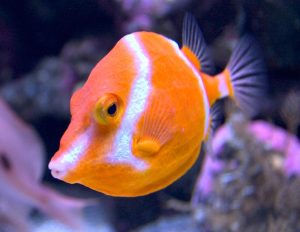



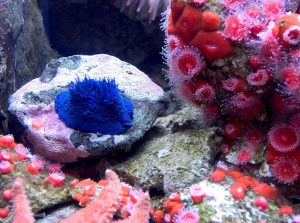




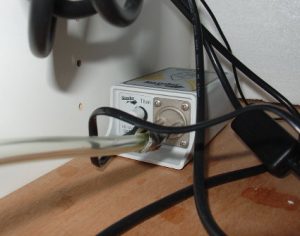

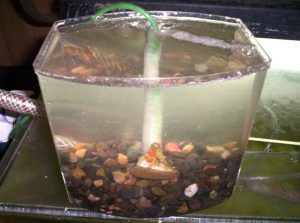

0 Comments